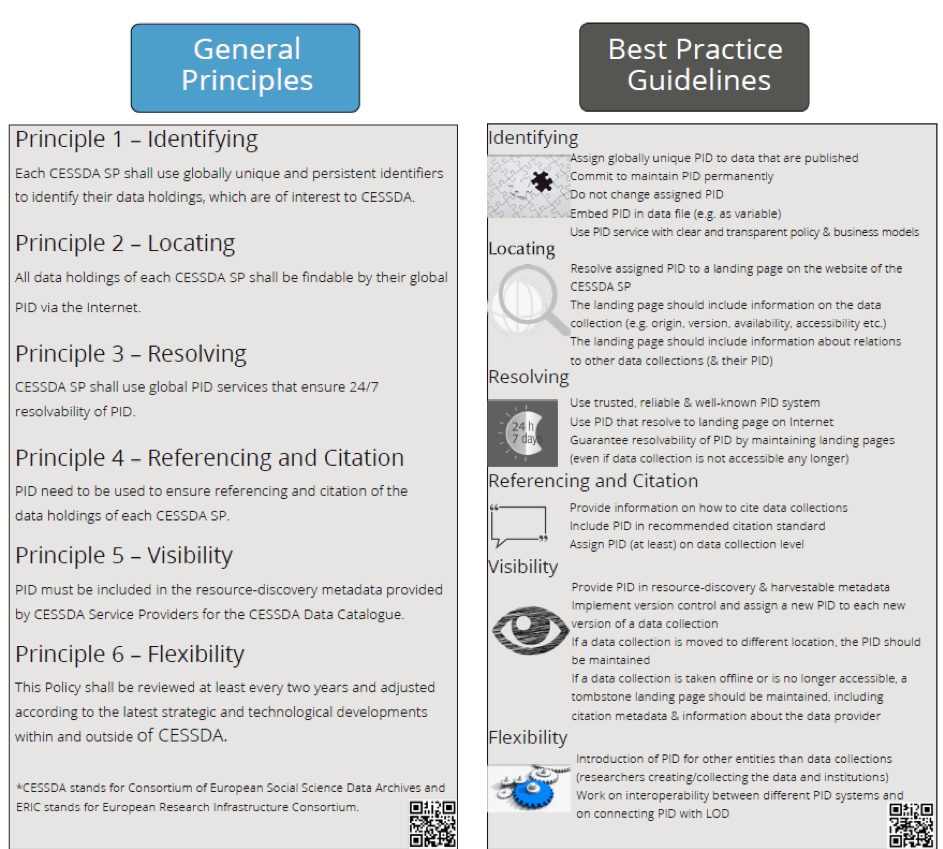The Consortium of European Social Science Data Archives goes PID
Compared to other disciplines, data archives have a long tradition in the social sciences. Their cooperation goes back to the 1970ties and they have good prerequisites and vast experiences to support the publication of the research data. In 2017 the Consortium of European Social Science Data Archives (CESSDA) got the status of an European Research Infrastructure Consortium (ERIC). It has sixteen members and each of them assigns a national Service Provider (SP), e.g. the GESIS Data Archive (Germany), Data Archiving and Networked Services (DANS) (Netherlands) and the Swedish National Data Service (SND) (Sweden).
Despite the long tradition and the achievements of the cooperation within CESSDA, there are still many tasks to be accomplished, among them the use of PID for all data holdings. The topic has been on CESSDA’s agenda for many years and it took a while to find a common approach. CESSDA SP form a heterogeneous group. Some have more technical means and resources in general available than others and it is hard to find one-size fits all solutions. Therefore all CESSDA SP were involved in the development of the CESSDA PID Policy. After a CESSDA wide survey, several workshops, and webinars as well as lots of video conferences all SP agreed on the six PID Policy Principles: #Identifying, #Location, #Resolving, #Referencing & Citation, #Visibility and #Flexibility (https://doi.org/10.18448/16.0040)

These principles were the lowest common denominator and further guidance and support for the implementation of the principles was needed. In response, the CESSDA PID Task Force (GESIS, DANS, SND) compiled the Best Practices Guidelines (https://doi.org/10.18448/16.0041). Meanwhile the majority of CESSDA Service Providers (eleven out of sixteen) is using PID (DOI, Handle, URN) to identify and reference their data. However, there are still PID related questions that need to be answered: dealing with versioning and granularity of longitudinal and comparative data as well as with access points to data through landing pages with metadata; how to handle the usage of several PID for the same data.
The CESSDA PID Task Force will continue to advertise the advantages of the use of PID for data and for other digital objects as well. It is providing support and training activities. According to the CESSDA ERIC Data Access Policy all CESSDA ERIC SP have to use PID for their holdings from 2020 onwards.